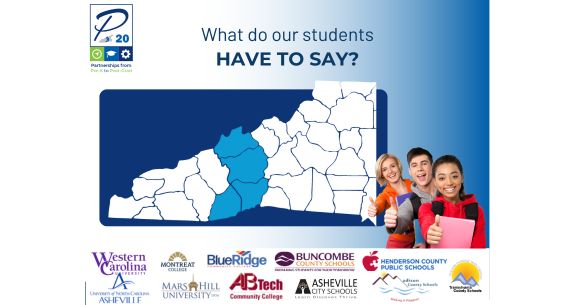Connecting with the extraordinary individuals who join our Student Ambassador program brings us immense joy. We are equally enthusiastic about the invaluable insights they provide about the educational and workforce landscape in our region. To follow our mission and work toward our vision, we strive to integrate innovative cradle-to-career skills and resources, with the aim of equipping our workforce with the essential skills and competencies that lead to sustainable livelihoods. We understand that the voices of students are crucial, shedding light on our current initiatives and inspiring our vision for the future. To capture those student voices and make the most of the insights they provide, we must collect and process data.
Our Spring 2024 Student Ambassador cohort, along with their peers, generated a rich array of data through their responses to our inquiries about their experiences. We employed a comprehensive five-step process for this data project:
- Collect
- Organize
- Code
- Analyze
- Report
For steps 2-5, which comprise the bulk of the analysis of this rich, qualitative data, we are indebted to the expertise of Hailey Carroll, a Ph.D. student in Industrial and Organizational Psychology and an intern at our parent organization, Land of Sky Regional Council.
Collect
We collected the data through two Google Forms and through student-created videos. The first form (Personal Voices) was designed to capture information from our Student Ambassadors about own educational experiences, influences, and perceptions. To complete the second form (Peer Voices), Student Ambassadors interviewed their peers by selecting from lists of questions we provided about career options, postsecondary options, and community resources. We collected 136 total unique responses from the first form (17 Student Ambassadors x 8 questions each = 136), and 255 total unique responses from the second form (17 Student Ambassadors x 5 peers each x 3 questions for each peer = 255). Students were prompted to provide at least two specific examples for each yes/no question. Each Student Ambassador also created at least three videos for social media (55 videos in total) with the general topic of “my life as a student.” The content of these videos was the third category of data we collected.
Organize
Form responses were outputted to spreadsheets, one for each form, with separate columns for each question and separate rows for each Student Ambassador’s responses. Data were also organized in Google Docs, one for Personal Voices data and one for Peer Voices data, categorized by question.
The Google Doc for the Personal Voices data contained an entry for each Student Ambassador under each question. Each entry included identifying information (name, school, and grade level); their full response; a shortened, edited response; a possible quote that could be used on social media; themes (entered after the completion of the “code” step); and recommendations to be shared with educational leaders.
For the Peer Voices data, the Google Doc contained an entry under each question for each peer interviewee. Each entry included identifying information (name, school, and grade level) for the Student Ambassador who conducted the interview, the same type of identifying information for the peer interviewee, the full response, and themes (entered after the completion of the “code” step).
Code
Hailey coded the responses in the spreadsheets that contained the form responses to identify common themes that showed up repeatedly in the students’ answers. She identified themes for the responses to each question and also developed a list of general themes that she noticed across responses to all questions.
The general themes in the Personal Voices responses were: access to CTE, COVID, racial discrimination, language barriers, health issues, opportunities, lack of opportunities, helpful teachers/professors, unhelpful teachers/professors, and growth.
General themes in the Peer Voices data were: counselors/advisors, family/friends, career fairs, I haven’t, personal research, classes, CTE classes, networking, teachers/professors, clubs, internships/job shadowing, and school provided information.
She also coded and identified themes in the student-produced social media videos.
Analyze
Next, Hailey created another spreadsheet in which she tallied the number of responses for each theme for each question. For multiple-choice questions, she also calculated the percentages for each answer option.
Report
Hailey concluded by creating a slide presentation that included data visualizations of her findings and a comprehensive case study summarizing the entire Spring 2024 Land of Sky Student Ambassador Program


